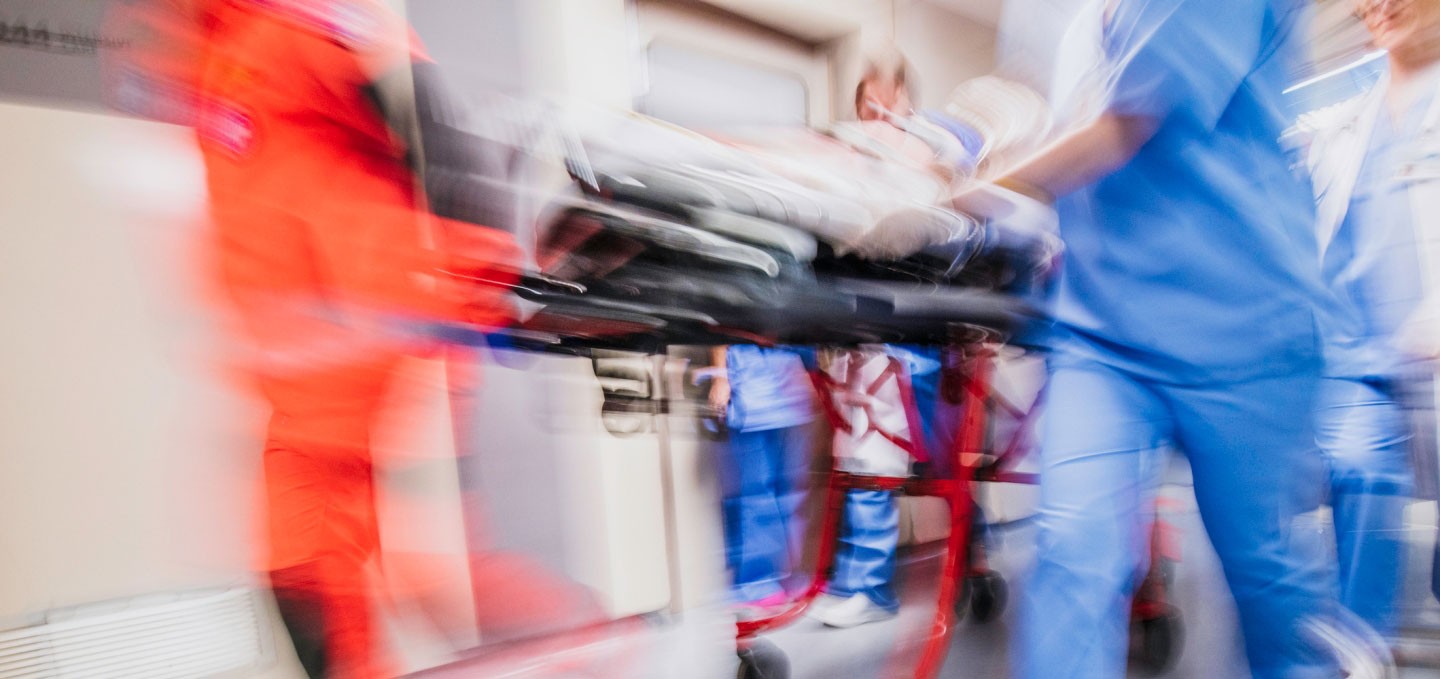The trauma team at CHI Health Creighton University Medical Center - Bergan Mercy mobilizes for anything from a life-threatening fall or bad car accident, to a gunshot wound or stabbing.
Trauma is the leading cause of death in patients ages one to 44 in the United States. The injuries seen at CUMC - Bergan Mercy's Trauma Center are the most severe — often life-or-death — and require immediate and intensive attention, even more than the serious cases treated in the nearby emergency department.
How does CUMC - Bergan Mercy's Level 1 Trauma Center differ from an Emergency Department?
 The trauma center at CUMC - Bergan Mercy is verified as a Level 1 Trauma Center by the Committee on Trauma of the American College of Surgeons.
The trauma center at CUMC - Bergan Mercy is verified as a Level 1 Trauma Center by the Committee on Trauma of the American College of Surgeons.
In Emergency Departments treat illnesses, such as asthma attacks, and injuries such as cuts or broken bones. Patients also are brought to the Emergency Department for more serious conditions such as heart attacks or stroke. These types of patients usually have one condition to be treated.
A Trauma Center is a special unit of a hospital with advanced technologies designed to quickly respond to the needs of patients who have suffered critical or life-threatening physical injuries. Trauma can result from a motor vehicle accident, act of violence, fire or fall. It can happen anywhere; while playing sports, at a worksite, or even at home. Trauma patients typically have multiple, extensive injuries, and may have secondary complications, such as shock or respiratory failure.
In According to The American College of Surgeons' Advanced Trauma Life Support Program (ATLS), the doctor who first attends to the injured patient has the greatest opportunity to impact outcome. Creighton University Medical Center was the second hospital in the U.S. and is the only hospital in the region recognized by the Joint Commission for its management of orthopedic trauma.
Trauma surgeons are available at CUMC - Bergan Mercy's Trauma Center 24 hours a day, seven days a week. They are specially trained to rapidly identify life threatening injuries and have the ability to take patients to the nearby operating suite within minutes. A trauma surgeon, orthopedic surgeon and neurosurgeon are on standby. The Trauma Team also includes trauma nurses and other highly trained specialists who can be mobilized immediately to report to the center.
How it Works
Saving lives at the CHI Health Creighton University Medical Center - Bergan Mercy Trauma Center is a multidisciplinary effort with a team approach.
EMS professionals assess the patient and begin stabilizing the patient's condition by immobilizing physical injuries, administering oxygen and medications, preventing shock, controlling bleeding and providing for the patient's emotional well-being. It is also their job to provide or arrange prompt transportation to the nearest appropriate health facility by the best possible means to enhance survival and prevent disability.
The on call trauma team is alerted as the critically injured patient is on the way. The Trauma Center team communicates with EMS by radio so they know what care has been initiated and how the patient is responding to it. Because the team already has a description of the patient's injuries, they coordinate the medical specialists that are needed and summon them to the Trauma Bay while the rescue squad or helicopter is on its way to CUMC - Bergan Mercy. This coordination of specialized care saves lives.
Resuscitation
The Trauma Team's primary goal is to identify and manage potentially life-threatening injuries within minutes. This process consists of several steps: resuscitation of vital functions, making a rapid primary survey of major physiological systems, and assessing and initiating definitive treatment for injuries. The initial assessment of a critically injured patient is a challenging task, which is made even more difficult because every minute can mean the difference between life and death.
The trauma bays at CUMC - Bergan Mercy are equipped with advanced life support, monitoring, and imaging technologies, enabling the team to get the real-time information on the patient's condition. An x-ray suite is nearby, with portable x-ray capabilities, as well as a CAT scan room and other diagnostic equipment. As many as 10 team members may be simultaneously performing tasks, while providing information to one another. Chaplains always are available to provide emotional and spiritual support for family and other loved ones.
Intensive Care
In After surgery, many patients are transferred to the intensive care unit, where one nurse cares for no more than two patients at a time. The less critical patients who require monitoring are moved to the medical surgical trauma floor.
Rehabilitation
In many trauma patients, especially those who suffered falls or were injured in car accidents, need physical rehabilitation in the hospital, or more intensive inpatient or outpatient therapy. From the moment the severely injured patient is brought through the trauma bay doors at CUMC - Bergan Mercy to the days of rehabilitation and the months after, CHI Health offers comprehensive care for those who suffer trauma. The CHI Health Immanuel Rehabilitation Center is accredited by the Commission on Accreditation of Rehabilitation Facilities. The inpatient program offers a full continuum of care from the beginning through the rehabilitation process, home, wellness services, lifelong follow up care and skilled or long-term care, as needed. Patient satisfaction ranks in the 99th percentile of the Health Stream database on four important questions about care.

